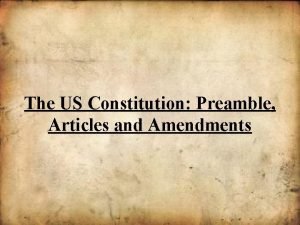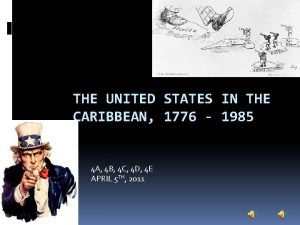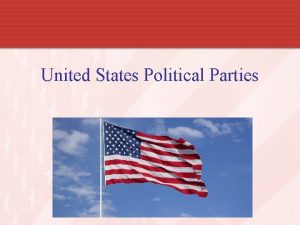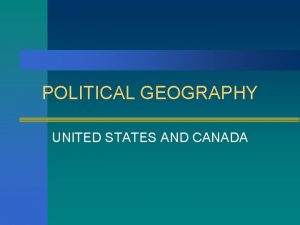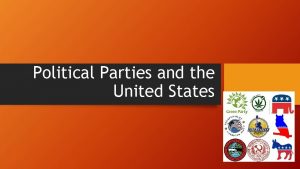The Political System of the United States Division













- Slides: 13

The Political System of the United States

Division of Powers



Checks and balances


Checks and balances: confrontation of powers

Presidential elections in the USA


How does the Electoral College work? • Each state has a number of electors in the Electoral College equal to the total of its US senators (always two) and its representatives, which are determined by the size of the state's population. Technically, Americans vote for the electors not the candidate. • California, the most populous state, has 55 electoral votes. A few small states and the District of Columbia have only three. • There are 538 electors in the College. In all but two states, Maine and Nebraska, the College works on a winner-takes-all basis. The winner of the popular vote in a state gets all the Electoral College votes in that state. • To become president, a candidate needs 270 Electoral College votes. The winning candidate does not need to win the national popular vote.

Fairness? In 2000 Al Gore won 48. 38% of votes nationwide compared to George Bush's 47. 87%. Ralph Nader took 2. 74%. Yet Mr Bush won because he got 271 Electoral College votes compared to 266 for Mr Gore. The winning votes came from Florida whose 25 College seats all went to Mr Bush despite the difference between the two in the state's popular vote being only 537.

American political parties since 1789

The Federal Government
 Soccer league hierarchy
Soccer league hierarchy United states bicycle route system
United states bicycle route system Was the united states on the axis powers or allied powers?
Was the united states on the axis powers or allied powers? Unit 2: the united states and canada worksheet answers
Unit 2: the united states and canada worksheet answers Sectionalism map of the united states
Sectionalism map of the united states United states v. nixon significance
United states v. nixon significance United states student association
United states student association The united states ought to provide a universal basic income
The united states ought to provide a universal basic income The preamble of the constitution
The preamble of the constitution The united states in the caribbean 1776 to 1985
The united states in the caribbean 1776 to 1985 The southeast region of the united states of america
The southeast region of the united states of america Expansion of the united states of america 1607 to 1853 map
Expansion of the united states of america 1607 to 1853 map When did nicholas novikov write the telegram
When did nicholas novikov write the telegram Who was the previous owner of texas
Who was the previous owner of texas








